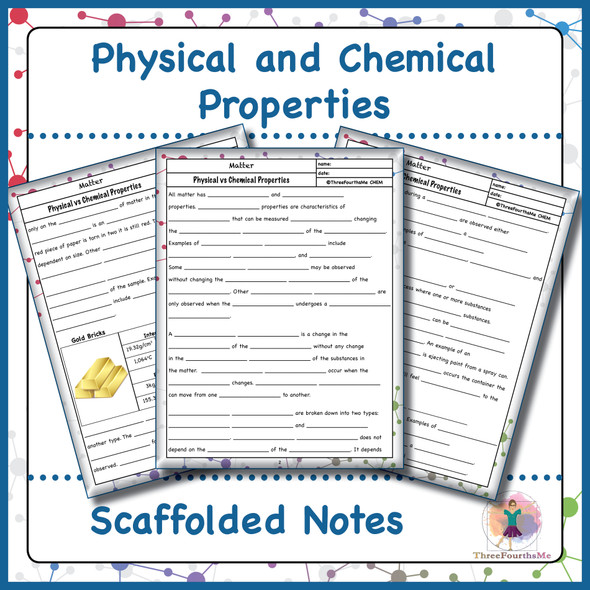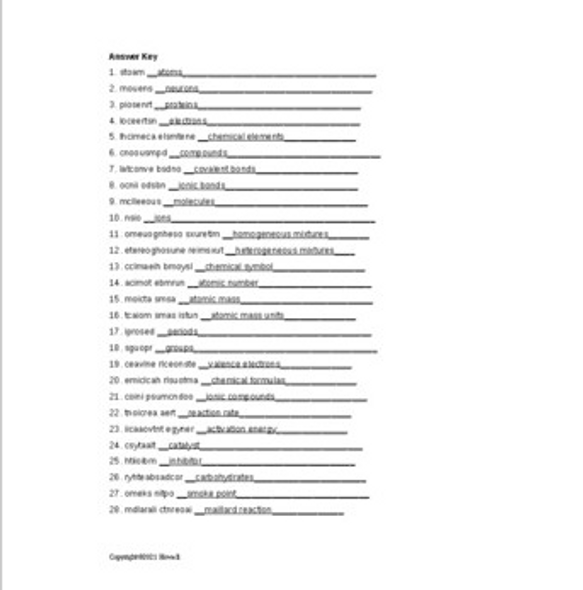Description
This zip file contains 19 files which can be used to compose a unit for Physical Science students in grades 5-8 introducing them to the Scientific Method, Density and Physical/Chemical Changes. Many files are available as editable word as well as pdf files. The learning goals addressed by these materials are listed below. The zip file contains 34 pages of student handouts not counting answer keys and specifically contains the following items:
-- Marzano self assessment scales with learning goals for the Scientific Method and Density
-- Marzano self assessment scales with learning goals for Physical and Chemical Changes
-- Cloze notes handout for students with learning goals for the unit on the Scientific Method and Density (notes are included in both pdf and word format which can be edited for specific teacher needs)
-- Cloze notes handout for students with learning goals for the unit on Physical and Chemical Changes (notes are included in both pdf and word format which can be edited for specific teacher needs)
-- 2 PowerPoints (68 slides) to accompany the cloze notes
-- Properties of Matter Lab activity
-- Density Lab activity with answer key
-- Density worksheet 1 with key
-- Density worksheet 2 with key
-- Scientific Method and Density quiz with key
-- Physical and Chemical Properties quiz with key
The Scientific Method, Volume, Mass and Density Learning Goals
Upon the completion of this unit the student will be able to:
1. list and briefly explain the major steps of the scientific method.
2. define the term hypothesis
3. explain why increasing the number of trials of an experiment improves its validity. 4. list some factors needed for good experimental design.
5. identify the following in a controlled experiment; control, independent variable and dependent variable.
6. explain what is meant by experimental bias.
7. identify and state the function of the following pieces of lab equipment; mortar and pestle,safety goggles, beaker tongs, test tube holder, beaker, test tube, graduated cylinder, bunsen burner, burner stand and meter stick.
8. recognize the metric system works on powers of ten.
9. list and define at least six metric system prefixes.
10. be able to measure length using a metric ruler.
11. be able to measure mass using a triple beam balance.
12. define the terms weight, gravity and inertia.
13. state the freezing and boiling point on the Celsius scale
14. define the term volume.
15. explain how volume is measured in a graduated cylinder
16. explain how the volume of a rectangular block is calculated mathematically.
17. explain how the volume of an irregular object can be determined by water displacement.
18. define the term density.
19. perform density calculations given the mass and volume of a substance.
20. recognize that pure water has a density of 1.0 g/ cm3 and that objects less dense than water will float in it, while objects more dense than water will sink in it.
21. define the term matter.
Physical and Chemical Changes Learning Goals
Upon the completion of this unit the student will be able to:
1. define the term physical properties and list examples of these.
2. define the term chemical properties and list examples of these.
3. list and describe four phases of matter.
4. describe the relationship between volume and temperature with respect to gases.
5. describe the relationship between pressure and volume with respect to gases.
6. list two factors which may cause substances to change phase.
7. define the terms freezing, melting, evaporation, vaporization, condensation and sublimation.
8. identify freezing, melting, evaporation and condensation on a phase change diagram.
9. identify the regions of solid, liquid and gas on a phase change diagram.
10. explain the difference between physical and chemical changes and list examples of each.
Terms of Use
- Purchase of the product is for classroom use by the purchaser only. It is a violation for individuals, schools, and districts to redistribute, sell, or post this item on the Internet or to other individuals.
This work is licensed under a Creative Commons Attribution-NonCommercial-ShareAlike 4.0 International License.










